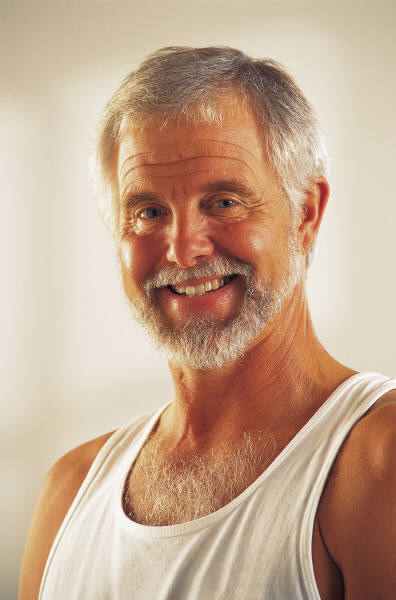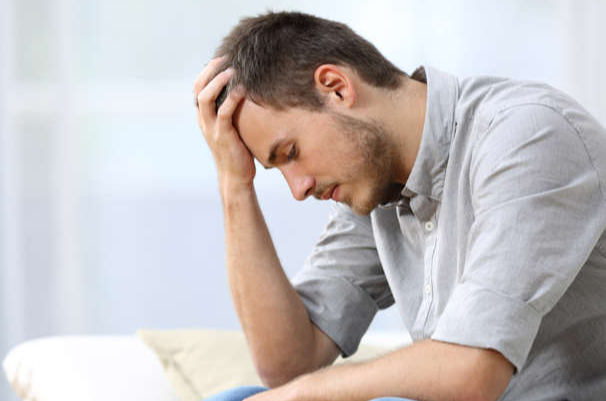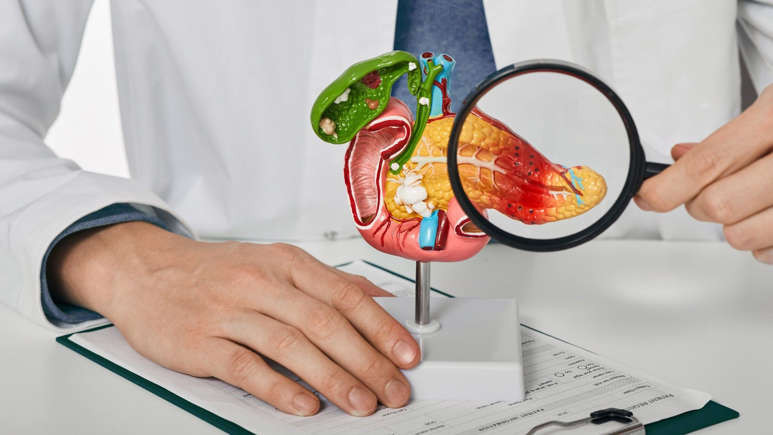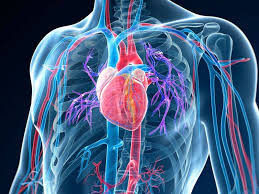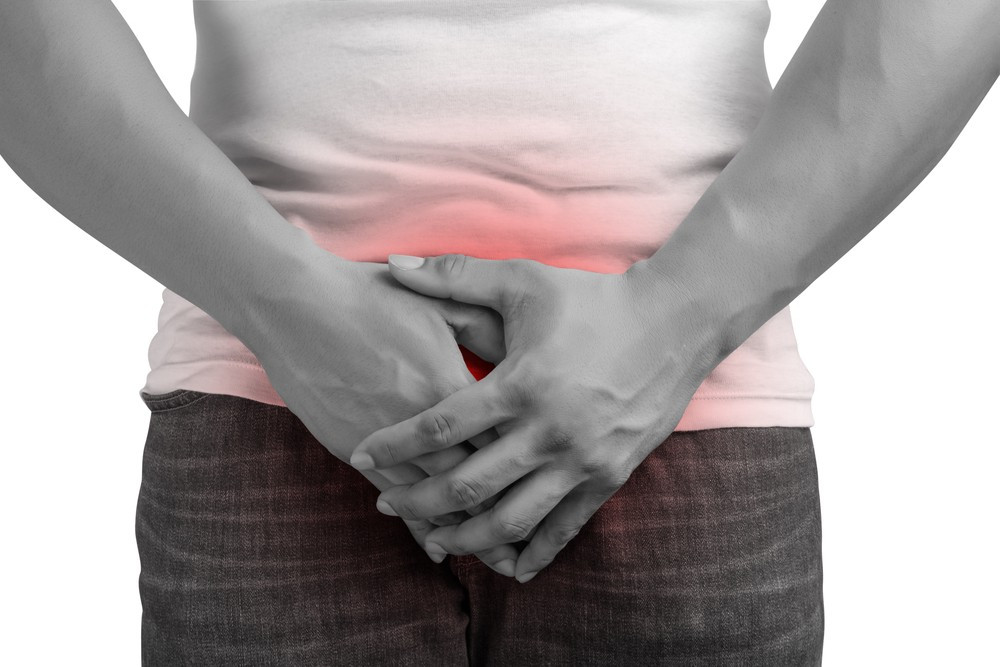We all know that exercise is an important part of staying healthy, but many people assume that as we get older, we should slow down. Nothing could be further from the truth – and in fact, investing in your physical fitness in your 50s, 60s and beyond is often the most valuable gift you can give yourself.
When we think of ageing well, we often think of staying healthy and retaining our independence; of continuing to pursue activities we enjoy, developing new hobbies, and staying active within our community. Just because our age changes, it doesn’t mean that we have to fundamentally change as people.
Time and again, studies show that taking time to improve our body’s strength and balance can significantly improve our physical and mental functions. It also actively reverses some effects of disease and illness that prevent older people from retaining their independence. According to Age UK, ageing well and being able to live a “healthy, socially inclusive lifestyle” in our 70s, 80s and 90s is easier when we take certain steps to improve our physical health and mental wellbeing.
Let’s take a closer look at why building strength and balance in our 50s, 60s and beyond is so important.
Reducing the risk of falls
At present, falls are the leading cause of injury among people over 75, and while the physical pain of a fall can be extremely serious, often the most harmful effects run deeper. The injuries that people sustain from falls can cause a host of health problems, which may lead to a serious loss of confidence and independence.
According to a survey by Age UK, millions of older people are seriously concerned about falling, with 4.3 million (36% of people surveyed) reporting that falling was the thing they were most worried about. This fear is by no means misplaced; statistics show that 30% of people 65+, and 50% of people 80+, fall at least once a year. But the good news is that a large number of falls may be preventable. The Charity Director at Age UK, Caroline Abrahams, says that while falls are a threat to older people’s health, wellbeing and independence, they shouldn’t be “dismissed as an inevitable part of growing older.” There are, in fact, many steps we can take in our 50s and 60s that greatly reduce the risk of falls. So what are they?
What are the benefits of strength training in mid-life and how can I get started?
Strength and balance training are hugely effective in reducing the likelihood of falls. This is because muscle weakness and poor balance are among the highest risk factors for falling. Strength training (basically, weight and resistance training) doesn’t just prevent your bones from weakening – it can also add years to your life. A long-term study of 3,600 older people showed that participants with higher levels of muscle mass lived longer and stayed healthier.
If you’ve never done strength training before, then the idea of lifting weights might seem quite daunting – but you don’t have to look like a bodybuilder to do it! New research suggests that it isn’t about lifting the heaviest possible weights – (which could easily be counterproductive) it’s about lifting any weight, so long as you exert yourself enough that you feel tired by the end of it. It’s often best to begin strength training by using just your body weight.
Try spending your first session working out your upper body, and the next working out your lower body. Exercises like squats are great for strengthening your legs, while push-ups are good for strengthening your arms, shoulders and chest. Bear in mind that full push-ups require a considerable amount of upper body strength, so we’d suggest doing either knee push-ups or wall push-ups. These exercises don’t just work out your chest, arms and wrists – they also strengthen and build the muscles that help you break a fall. Have a look at the linked videos to see the correct technique, and remember there are ways to make these exercises easier – for example, doing chair squats rather than full squats.
Doing exercises like these for half an hour, twice a week, can have a big impact. As we get older our muscle mass and bone density slowly begin to decrease. Even gentle strength training stimulates muscle and bone growth, which can go a long way in preventing falls and fractures. It can also help improve functional mobility, e.g. how fast you can comfortably walk. We know the gym isn’t everyone’s favourite place, but because of its equipment, facilities and professional advice, it has big benefits. Have a read of our guide to starting the gym if you want to feel more confident about getting started.
If hitting the main area of the gym isn’t for you, then you could always ask a friend to come along to an in-person exercise class with you, as this can add a fun social element to your workouts. Sharing an experience with someone you care about and learning together can help exercise become an enjoyable part of your routine – something you actually look forward to, rather than a chore!
Incorporating strength training, aerobic activity, and stretching into your exercise routine
According to experts, the best type of exercise incorporates aerobic activity, strength training and stretching – and luckily, it can be easier than you think to merge all three. For example, walking briskly to work or to run errands, and then doing a short session of strength training and stretching afterwards, ticks all three boxes.
Aerobic activity can often be incorporated into your everyday life without much effort – walking the dog, hiking, cycling, swimming, and dancing (even in your living room!) all count as aerobic activity. The key is to keep a regular routine – and as always, have fun. Check out our articles, 5 steps to staying fit from home or 17 creative ways to increase your daily step count for more inspiration and ideas.
Exercising at home
There are many ways you can exercise from the comfort of your own home, too – and as luck would have it, some everyday household jobs count as strength training and aerobic activity. Fixing the car, DIY and gardening can all have big health benefits – and in fact, the NHS have stated that gardening can be both a moderate and vigorous aerobic activity, as well as strengthening muscles. Any form of digging or landscaping counts as robust aerobic activity, while raking leaves, planting seeds and pulling weeds is more moderate. Even mowing the lawn at a leisurely pace counts!
Virtual exercises have also never been more popular than they are today – and for good reason. While lockdown might have been the initial reason many people got into exercise classes, they’ve remained popular because they’re a great way to exercise on your own terms and at your own pace. You can keep yourself motivated by following the routine, but you can also take as many breaks as you like. Plus, if you’re not confident enough to work out in front of other people, online videos give some welcome privacy, too. But with so many online exercise classes available, which should you choose?
Turbulence Training on YouTube offer a great selection of free no-equipment bodyweight workouts that are perfect to do from home – and because the videos are generally under 10 minutes, they’re ideal for beginners, and can give you the knowledge to create your own home workouts.
Another versatile fitness channel is Natalie Jill Fitness. Natalie Jill is a popular personal trainer who offers free workouts for weight loss, body weight exercises, exercise ball routines, and plenty of useful health and nutrition tips too. Another inspiring channel is Sean Vigue Fitness, where you can do strength training, cardio, and core training – as well as see how you fare doing Sean’s “fun” one minute burpee challenge!
If you are considering getting into yoga, you might want to check out Yoga With Adriene. With over eight million subscribers and videos for all abilities, there’s something for everyone. If you’re new to yoga, check out Adriene’s Yoga For Beginners – and if you’re ready to work up a sweat, you might want to try her Yoga for Weight Loss or Total Body Yoga playlists. Alternatively, check out Do Yoga With Me, which offers a great range of yoga at home videos – and seeing the beautiful Canadian British Columbia backdrop throughout the videos is just an added bonus! If you’re interested in finding out more about the benefits of yoga, you might want to read our article an introduction to yoga.
As far as online exercise videos go, this is just the very tip of the iceberg. For more inspiration, have a read of Make Your Body Work’s suggestions for the 50 best free online workout resources, check out the NHS approved exercise videos, or have a read of our own article, five free online exercise classes.
What is balance training and how can I get started?
Balance training involves working out the muscles that improve our stability and keep us upright. Though the importance of good balance is often neglected, it’s crucial for just about everything we do in life. An act as simple as standing up from your chair, walking across the room and bending over to put shoes on depends on your ability to remain steady.
There’s more good news for those of us with a green thumb: because it involves lots of lifting, bending and stretching, gardening is also a good activity for improving balance. (It sounds like an unexpected but welcome perk of investing in our health might be great looking gardens!)
Alternatively, why not have a go at tai chi? Because it focuses on bone strength, joint stability and cardiovascular health, tai chi is one of the single most effective ways to improve balance – and according to Harvard University, it reduces the risk of falls among older people by a staggering 45%. It’s so effective in improving balance because it targets all the physical aspects needed to stay upright and steady, including leg strength, reflexes and flexibility.
And there’s another intrinsic benefit to tai chi: it can have a powerful effect on your psychological health too. As we’ve seen, fear of falling is the most common concern among older people – yet, being fearful of falling can greatly increase the likelihood of a fall actually occurring! Practising tai chi can help to tackle that fear and boost confidence. Tai chi is also about becoming more aware of your own body and the world around you, and this heightened spatial awareness can help to reduce your risk of falling even further.
One of the great things about tai chi is that it’s considered “zero impact”, which means it’s suitable and adaptable for all ages and abilities. It doesn’t put too much pressure on ageing joints and bones, and even though the movements are slow, it still counts as stimulating exercise. When lockdown eases, why not check out tai classes close to you and see what you think? Have a look on Classfinder to find your nearest classes. Or, if you’re not sure tai chi is for you, yoga is another gentle activity that has big health benefits, balance being just one of them (more on that later!).
There are also many simple balance exercises you can do at home. Just walking backwards and sideways can be helpful, as can walking on your toes or your heels, or walking heel-to-toe. Just remember to do the exercises next to a wall or chair in case you lose your balance. Have a look at the NHS suggested balance exercises for more detail on technique, or watch this 10 minute workout video on balance exercises you can do at home.
Again, for a monthly fee, you can also gain access to a whole host online exercise classes from online fitness provider Feelnoo*; some of which focus on improving balance.
How regular exercise in mid-life can reduce the risk of chronic disease
Regular exercise is important throughout life, but it becomes even more important as we age. A recent Swedish study found that regular exercise is the most important factor in promoting “a high health-related quality of life into old age.” It not only improves physical and mental functions, but can also actually reverse the effects of chronic disease – two of the biggest ways to keep people independent and mobile in their later years.
When it comes to improving our lifestyles in later life, exercise does much more than just enhance our muscle strength and balance. It can also improve cardiovascular health, reduce our risk of developing many illnesses and diseases, help us to maintain a healthy weight, and boost our energy levels – all of which go a long way to helping us maintain our independence in later life.
More good news is that physical activity has major health benefits no matter how old we are when we start – luckily enough for those of us who have been exercise-shy most of our lives!
Regular exercise has been proven to reduce the risk of conditions including:
• Heart disease and stroke
• High blood pressure
• Cholesterol
• Joint and muscle pain
• Type 2 diabetes
• Alzheimer’s
• Cancers including breast, lung and colon
• Osteoporosis
• Arthritis
Research shows that regular exercise is also safe for older people who are frail or in poor health. Even gentle exercise, like low intensity walking, can be enormously beneficial. Whatever exercise you choose to do, whether it’s high intensity interval sessions and weight training, or gentle yoga and tai chi, you’ll still be improving your strength and suppleness, which in turn can support improved balance and coordination. All of which will help to keep you independent for longer.
As an added bonus, building strength and balance might even improve your memory! A study by the National Institute on Ageing found that moderate physical activity increased the size of the hippocampus (the part of the brain responsible for memory). It also improved spatial memory, which helps us remember where things are located – great if you’re someone who regularly finds your keys in the fridge!
How building strength and balance over 50 can improve mental health
When we talk about building strength and balance, we’re mostly talking about physical strength and balance – but it can also benefit our mental health.
Every time we exercise, our brains release endorphins which can help to alleviate stress, anxiety and depression. These chemicals can improve your mood, keep your brain healthy and improve the quality of your sleep. All these factors significantly contribute to overall quality of life – and living life to the fullest is a key ingredient in staying independent.
So how can we build strength and balance in our minds as well as our bodies? Yoga and meditation are among the most beneficial activities – and because they’re low-impact, they can be enjoyed by everyone.
Research shows that simply practising yoga or meditation once a week can strengthen cognitive skills and help prevent age-related mental deterioration. One study showed that people who did yoga once a week showed improved mood and enhanced memory when compared to people who did brain-training exercises. And even though brain-training is specifically designed to improve cognitive ability, it was yoga that had a greater effect on a person’s ability to focus and multitask (and, unlike brain training, yoga also counts as physical exercise!).
Dancing is another activity that has a powerful effect on your mood as well as your body. According to the New York Times, learning to dance can be a “potent way to slow the effects of ageing, strengthening both the body and the mind.”
Learning any form of dance, be it folk or salsa, improves your aerobic fitness and mental capacities at the same time. A study found that participants attending dance classes showed improved brain function when compared to participants who exercised by walking or stretching. This suggests that activities where you move, learn, and socialise have the biggest effect. To get inspired, you might want to have a read of our article; 10 online dance classes for beginners.
A final note…
In spite of the common consensus that older people should “take it easy”, it’s clear that winding down as we age isn’t always the best idea! As Age UK stated in their Healthy Ageing Review: “Rather than considering older people to be past the point of reaping the benefits , research concludes that there is no section of the population in which it is more worthwhile and necessary to promote physical activity.”
If you’ve never been especially active or are out of shape, it’s easy to feel daunted at the idea of including exercise in your daily life. But be gentle on yourself, and go at your own pace. It only takes a small amount of physical activity to have a big impact on your quality of life. Investing in your physical and psychological health in your 50s and 60s is the most rewarding gift you can give yourself. Remember it’s not just about adding years to your life – it’s about adding life to your years.
Source: Rest Less
